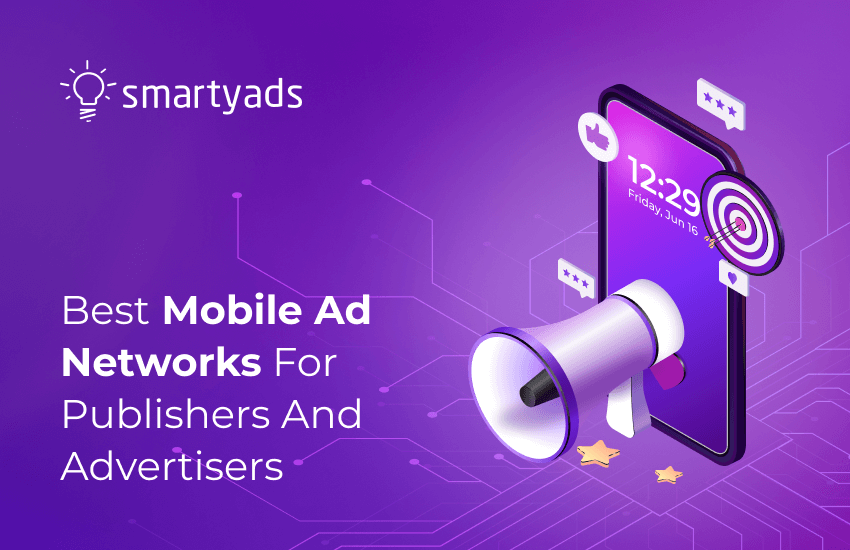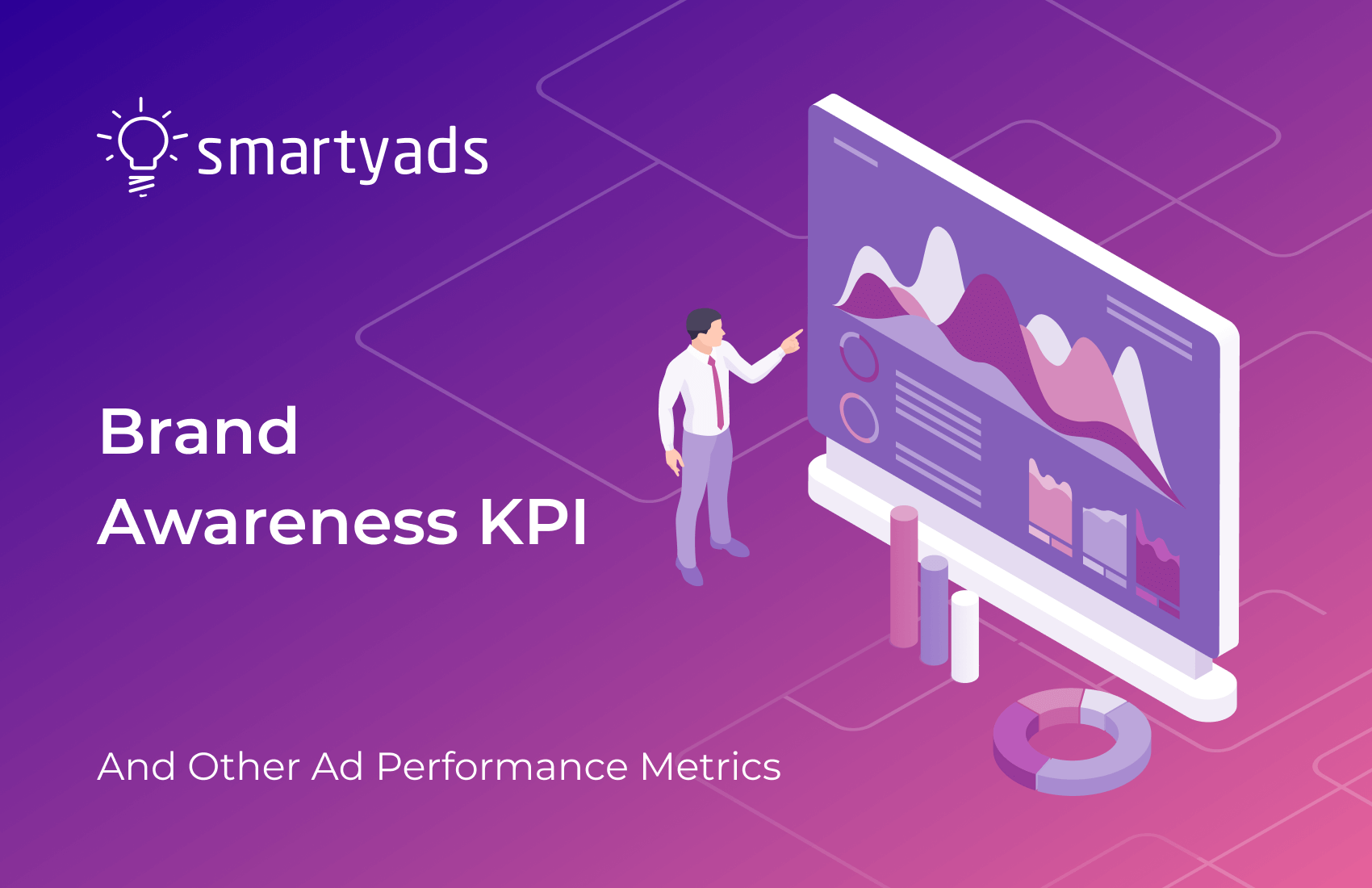- By 2025, more than 62% of all web traffic comes from mobile devices, making mobile advertising a key part of any digital strategy. For app publishers, selecting the right ad network can greatly influence both earnings and how users interact with their app. This guide explores the best mobile ad networks and shares straightforward, actionable tips to help you choose the ideal partner for your app’s success. Read more about mobile advertising trends in our previous article.
Moreover, you can find some facts about mobile marketing statistics below:
- Over 90% of mobile time is spent on apps;
- Internet users spend 57% of their daily online time using mobile devices;
- The average consumer spends more than 4 hours and 37 minutes per day on their smartphones;
- By the end of 2024, mobile devices (not counting tablets) accounted for 62.54% of global web traffic.
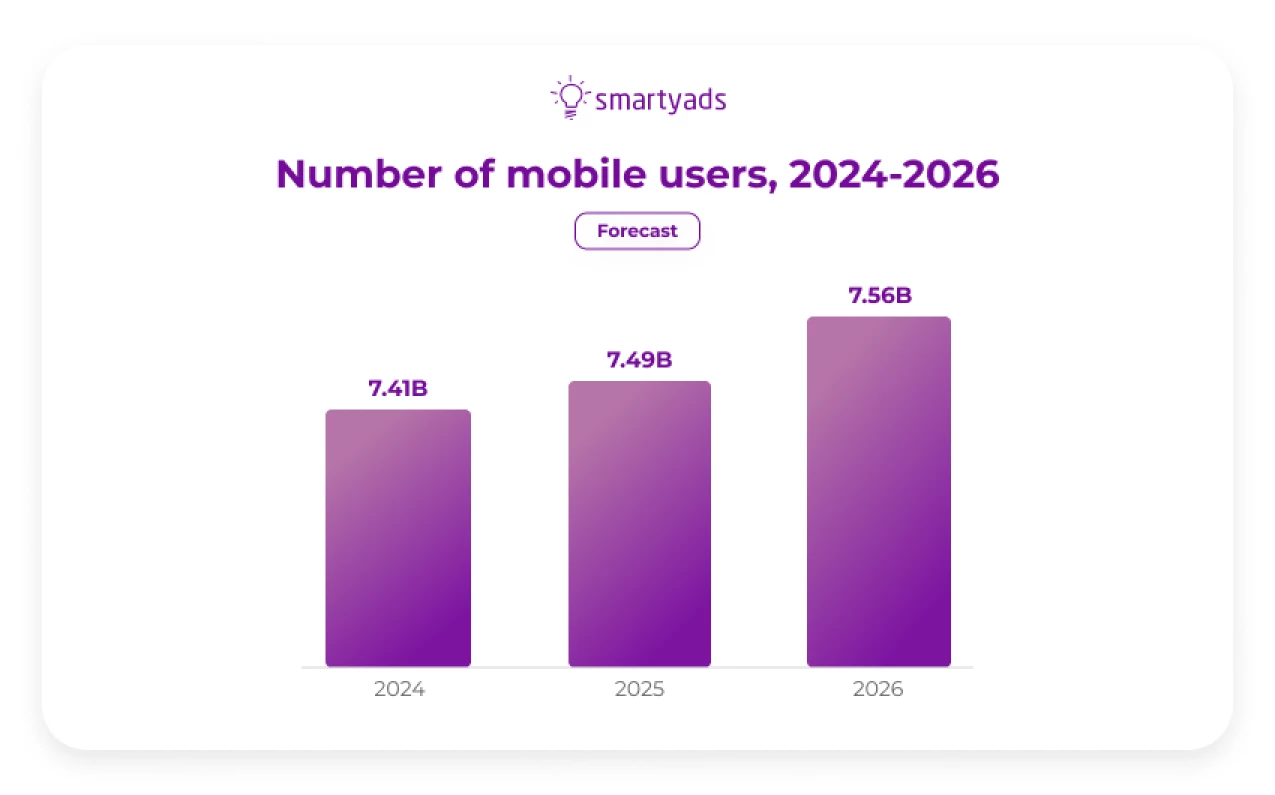
As mobile usage continues to rise steadily, mobile advertising is expanding right alongside it. In this guide, you'll explore the best mobile ad networks for publishers and gain insights into how to select the one that best fits your app's needs.
Key Takeaways:
- With the ongoing growth of mobile engagement, ad networks have become a crucial tool for app publishers aiming to generate revenue efficiently. These platforms act as a bridge between advertisers and publishers, offering a range of formats such as native ads, video, and interstitial placements.
- Leading networks like SmartyAds, AdMob, and Facebook Audience Network grant access to extensive advertiser pools. Through programmatic advertising, real-time bidding, and advanced targeting features, publishers can significantly increase their ad income.
- Each platform supports different monetization models—including CPM, CPC, CPI, CPA, and CPV—giving publishers the flexibility to tailor their revenue strategies to their specific goals.
- Notably, SmartyAds DSP delivers a full-featured solution for both demand and supply sides. With access to premium traffic, advanced targeting capabilities, and smooth integration, it empowers publishers to boost fill rates and earnings while maintaining a seamless user experience.
What is a mobile ad network?
The mobile ad network, or app ad network, is an integrated platform that connects advertisers with app developers or publishers seeking to sell mobile ad inventory.
Mobile ad networks function as intermediaries between mobile supply-side platforms (SSPs), which publishers utilize, and mobile demand-side platforms (DSPs), which advertisers use.
As a publisher, you want a network that generates revenue without tarnishing your reputation with irrelevant or inappropriate advertisements. In addition, you should choose a platform that offers multiple ad formats.

How do mobile ad networks work?
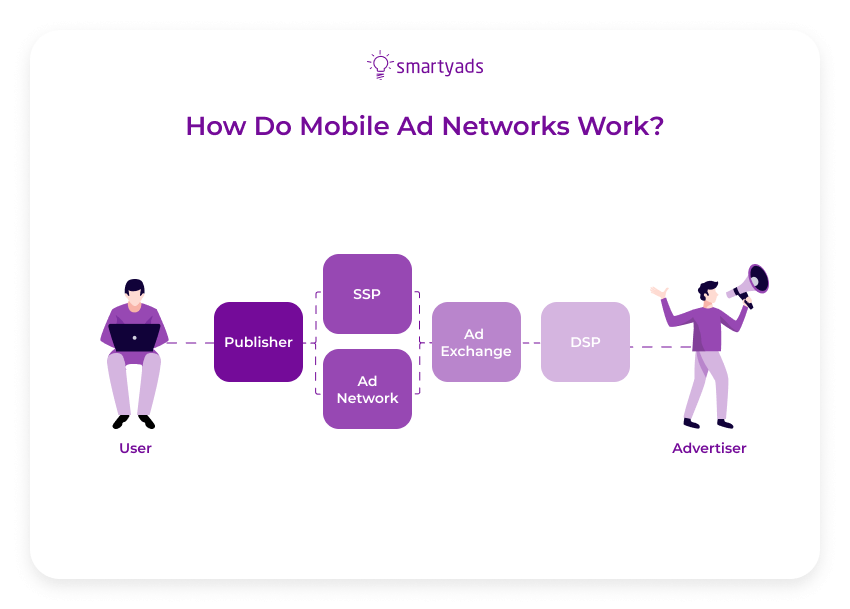
We know what mobile ad networks are, but how precisely do they function? When an app user sees an advertisement, a complex process occurs behind the scenes, which resembles the following:
- Once a publisher with an app joins an ad network, the network will have access to the users' data of the app, available ad space, and so on;
- When a user opens the publisher's app, a piece of ad inventory is generated. This inventory needs an advertisement to be monetized;
- The ad network also has access to mobile ad demand, either directly from advertisers who have joined the network, through SSP and ad exchange integrations, or both;
- The mobile ad network uses the data collected from the publisher and the campaign requirements from advertisers to find the best match for the available ad space;
- Once the mobile ad network has identified the best ad space, the creative is sent to the app, and the user sees an ad.
Why are app ad networks important?
A key benefit for both advertisers and publishers is that working with mobile app ad networks saves them time and money. Ad networks handle the technical and commercial aspects of producing and selling ads. That’s not the full list, here’s what functions they serve:
Save time and money
App ad networks simplify ad placements and optimization, saving both advertisers and publishers time and money.
Handle tech and business aspects
They manage the technical setup and commercial transactions, streamlining the process for both parties.
Boost user acquisition and ROI
With better targeting, ad networks help increase user acquisition and drive higher ROI.
Maximize publisher revenue
Publishers can monetize their inventory more effectively through broader access to advertisers and optimized pricing.
Power programmatic advertising
They facilitate the growth of programmatic ads, automating transactions for scalable, efficient ad management.
Offer analytics
Ad networks provide data-driven insights, helping advertisers and publishers optimize performance.
Types of mobile ad networks
You can distinguish between two main types of mobile networks. In some way, this comparison explains how mobile ad networks work.
Vertical ad networks focus on a specific niche or industry. They target ads to audiences in that sector, such as sports, fashion, technology, or finance.
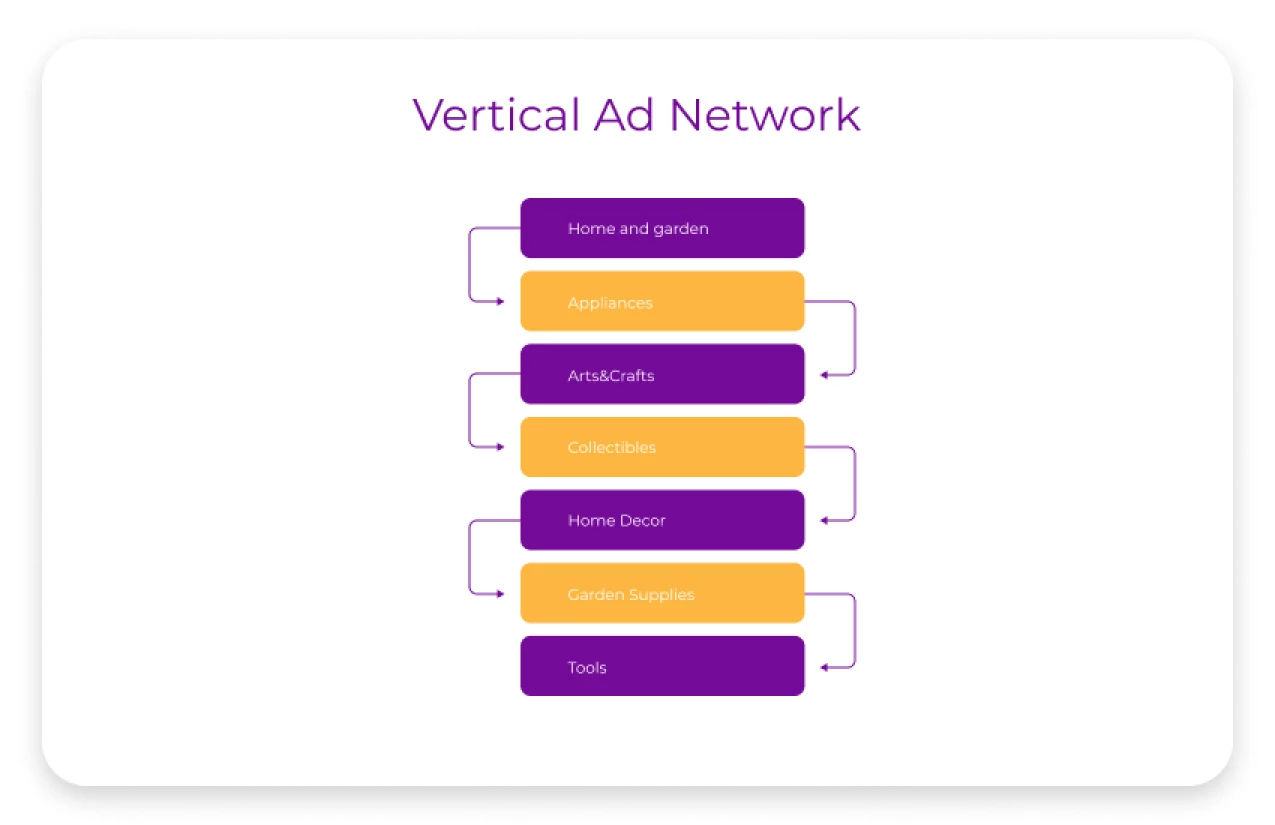
Core word: Niche (as it relates to the focused nature of the mobile audience or content).
Horizontal ad networks serve ads across a broad range of industries and websites without a particular niche focus. They take a more general, wide-reaching approach.
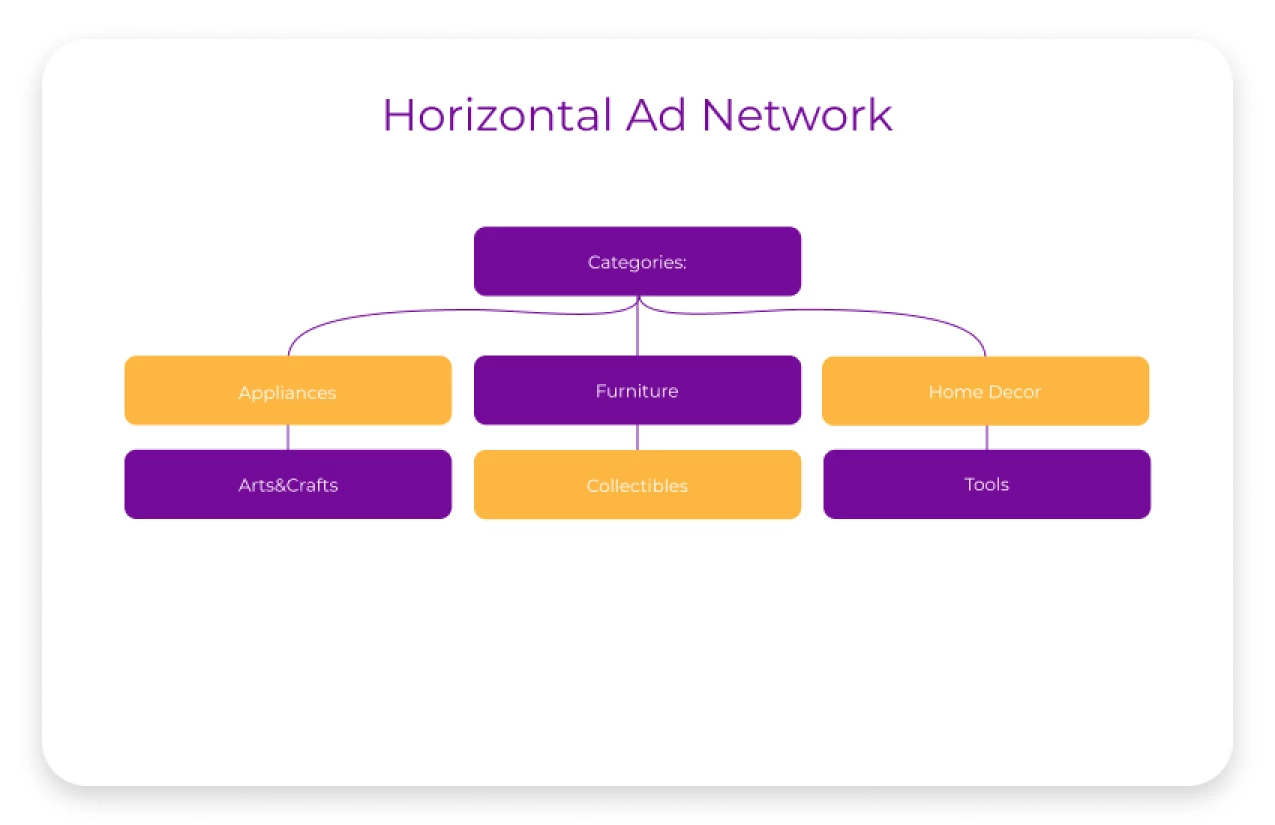
Core word: Broad (indicating their wider reach across different industries or topics).
Additionally, there are premium networks that specialize only in accumulating premium inventory and selling it to advertisers. Those are considered very hard to tap into, albeit they also ensure all safety measures to the maximum.
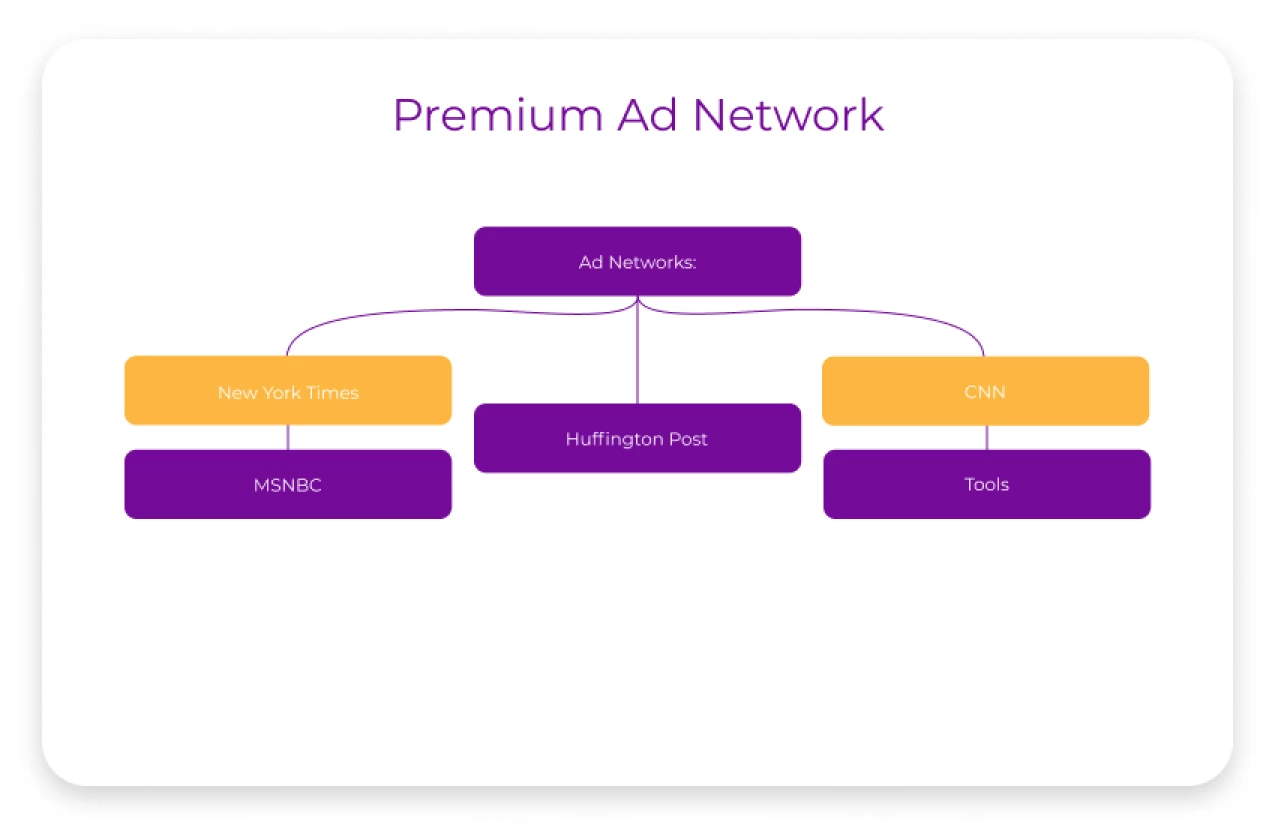
Performance networks. These focus on pay-per-click (PPC), cost-per-install (CPI), or cost-per-action (CPA) payment models. Media buyers who aim for performance advertising campaigns normally choose cost-per-action payment models.
Brand awareness networks. Ad networks that can lift brand awareness and recall are based on the cost-per-mille (CPM) advertising model. In this case, advertisers aim to list their brand awareness KPI and familiarize their audiences with a new service, product, or brand name in general.
Finally, there are in-app advertising and mobile options designed specifically and only for the mobile ecosystem. These options accumulate solely mobile traffic and serve mobile ad formats. Additionally, today on the market you can find IOS ad networks and Android ad networks suited to these operating systems.
Benefits of mobile app advertising
Mobile advertising has myriads of opportunities and benefits:
A vast audience
With around 7 billion people (and the number continues to grow) carrying smartphones almost everywhere, mobile content and advertising have numerous opportunities with the largest mobile ad networks.
Personalization
Mobile divides provide more freedom for personalization than desktop campaigns—with geotargeting and geomarketing tools, ads can be delivered outdoors and at specific important venues.
Awareness
Mobile campaigns get more responses at the consideration stage than other types. While people are more likely to convert and make a purchase on PC, they are also more likely to share it there.
Engagement
Mobile ads offer vast opportunities for creativity and go far beyond traditional advertising. Such creatives can be static and dynamic. They are better designed for user interaction and performance tracking.
Mobile advertising business models
Before deciding, investigate the various ad campaigns a mobile advertising network provides. The five major categories are CPM, CPC, CPI, CPA, and CPV.
Cost-per-mille (CPM)
CPM is the best development strategy because it enables publishers to profit every second an ad appears on a website or app. Additionally, publishers can anticipate income if their visitors are consistent and predictable.
Advertisers are charged using the same approach each time an advertisement is displayed 1,000 times, or "a mille".
Cost-per-click (CPC)
Under the CPC model, advertisers pay for every click on their mobile ads. By employing this strategy, mobile platforms and ad publishers risk delivering many unpaid ad impressions and losing money.
Cost-per-install (CPI)
Under the CPI model, advertisers are only charged when a click on an advertisement results in the installation of a mobile application. The cost-per-install metric is essential for mobile app developers and marketers to track, as it exposes the cost of acquiring new customers.
Cost-per-action (CPA)
When an app is promoted on a mobile ad network, an advertiser is charged for specific user actions, which is a more advanced type of Cost-Per-Install (CPI). CPA, which facilitates payment for particular actions such as in-app purchases, subscriptions, and sign-ups, gives publishers more opportunities to monetize their inventory.
Cost-per-view (CPV)
The greatest users of this technique are marketers running video ad campaigns. According to this business model, advertisers get charged each time their mobile video ad is viewed.
Mobile ads targeting
There are a number of parameters that enable narrowing down a mobile ad campaign reach to a certain audience. These elements are referred to as targeting options.
Targeting Option | What It Does | Use Case |
| Geo | Targets users by country, region, city, or specific locations | Promote local businesses, region-specific campaigns, location-based services |
| Operating System (OS) | Targets users based on iOS, Android, or other mobile platforms | Optimize ad creatives for platform-specific features and compatibility |
| Device | Targets specific mobile device models or brands | Ensure optimal ad display and performance across different screen sizes |
| Gender | Targets users based on gender demographics | Promote gender-specific products or services |
| Connection | Targets users based on connection type (WiFi, 4G, 5G) | Optimize for data-heavy content or ensure smooth ad delivery |
| Interests | Targets users based on behavioral data and interests | Deliver relevant ads aligned with user preferences |
| Carrier | Targets users of specific mobile carriers | Carrier-specific promotions or services |
| Dayparting | Targets users during specific hours or days | Optimize for peak engagement times |
| Age | Targets specific age demographics | Age-appropriate content and products |
| Language | Targets users based on language preferences | Localized campaigns and multilingual apps |
How to choose the best mobile ad network?
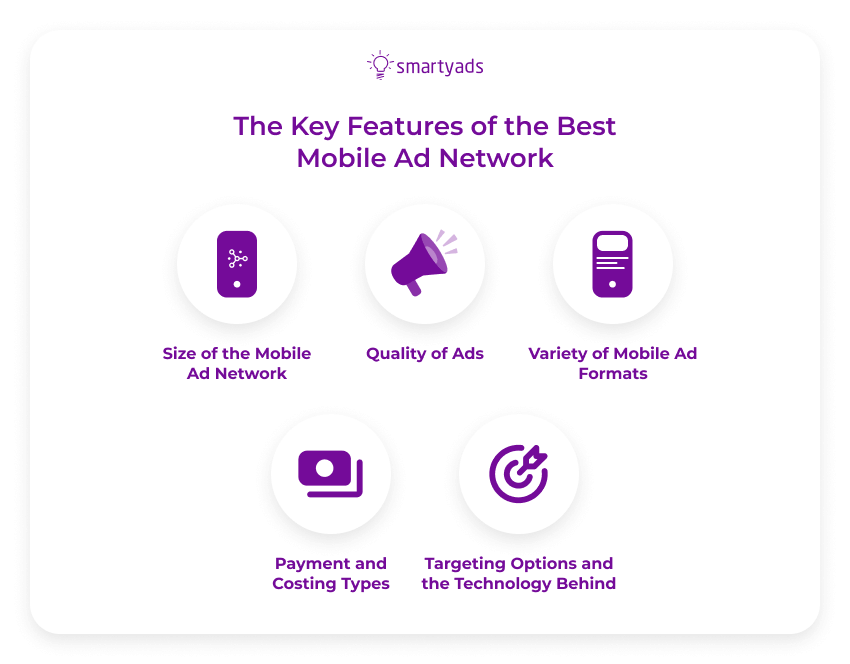
When choosing a mobile app advertising network, you should consider the following factors:
Size of the mobile ad network
The option you choose should accumulate an essential pool of demand partners globally. This ensures that your inventory will sell out quickly.
Price model, including compensation & payment terms
Make sure that the pricing model fits your requirements and that the payment terms are flexible enough for you to withdraw the money when you need it.
Ad quality
This applies not only to creative vetting; it also means that the platform should have all tools in place to verify advertisers and their campaigns. Additionally, a reliable ad network should support the implementation of ads.txt for mobile apps. Originally used for websites, ads.txt (Authorized Digital Sellers) is now used in mobile apps to reduce ad fraud by allowing publishers to declare who is authorized to sell their ad inventory. This helps ensure higher ad quality and prevents unauthorized sources from profiting from your app’s traffic.
Support provided
Not every publisher is well-versed in programmatic platforms. Additionally, timely support is crucial for achieving smooth problem resolutions.
Publisher controls
It is good if the platform provides you with inventory-controlling tools that enable setting floor pricing, blacklisting demand sources, and selecting which types of ads to give preference or block in your app.

10 Top Mobile Ad Networks
Ad networks are diverse, and finding the most suitable and reliable format of full-screen ads for mobile apps with specific niches can be challenging.
Therefore, we have compiled a list of the top ad networks that provide a full breakdown of how they work and what business models they offer.
Here is best mobile ad networks list:
| Network | Min. Traffic | Payment Terms | Ad Formats | Best For | Key Strength |
| SmartyAds | No minimum | NET 30, $100 min | Video, Native, Interstitial, Banner, CTV | All publisher sizes | High fill rates (80%+) |
| Google AdMob | No minimum | Monthly, $100 min | Native, Video, Banner, Interstitial | App publishers | Google ecosystem integration |
| Facebook Audience Network | No minimum | NET 30, $100 min | Native, Video, Banner, Interstitial | Social apps | Advanced targeting |
| Unity Ads | No minimum | NET 60, $100 min | Video, Playable, Banner | Gaming apps | Gaming-focused optimization |
| AppLovin | 10K+ DAU | NET 30, $50 min | Video, Native, Banner | Mobile games | AI-powered optimization |
| ironSource | 5K+ DAU | NET 30, $50 min | Video, Offerwall, Banner | Gaming publishers | Comprehensive monetization |
| Vungle | No minimum | NET 60, $50 min | Video, Native, Banner | Performance campaigns | Creative optimization |
| AdColony | No minimum | NET 45, $25 min | Video, Display, Native | Brand advertisers | High-quality video ads |
| Chartboost | No minimum | NET 60, $200 min | Video, Interstitial, Native | Mobile games | Gaming expertise |
| InMobi | No minimum | NET 30, $100 min | Video, Native, Banner | Global reach | Emerging markets |
And here are more detailed descriptions of those platforms and their features:
SmartyAds

SmartyAds is a complete ad platform that connects publishers with premium advertisers through programmatic advertising.
Features:
- Real-time bidding with automated optimization
- Precise targeting by location, device, and user behavior
- Multiple ad formats: video, native, interstitial, banner, and CTV
- Connects to major ad exchanges and demand sources
- Live performance tracking and detailed reporting
Benefits:
- Consistent 80%+ fill rates across popular app categories
- Transparent pricing with competitive revenue shares
- Strong fraud protection and advertiser quality control
- Personal account managers and technical support
- Quick setup with existing monetization tools
Best For: Any publisher wanting steady revenue from quality advertisers with hands-on support.
Payment Terms: Monthly payments with $100 minimum via wire transfer, PayPal, or other methods.
SmartyAds SSP features
Highest fill rates. The platform provides high fill rates through top verticals (arts and entertainment, technology and computing, gaming, business, education, health, and fitness). The fill rate is over 80%.
Reach. Effective RTB selling on a CPM basis. One of the best CPM ad networks.
Ad formats. High-impact mobile web and app monetization formats include video, native, interstitials, rewarded ads, and CTV.
Maximized demand. Using RTB and competitive technologies, publishers can frequently connect to premium advertisers.
SmartyAds DSP features
Reach. Effective RTB purchasing on a CPM basis.
Ad formats. SmartyAds provides different ad formats, including banner ads, video ads, display ads, native ads, interstitial ads, full-screen ads, rich media ads, CTV, etc.
Targeting options. The platform gives precise targeting for mobile and app advertising, including target audience according to GEO, OS, IP, dayparting, device type, and more.
Brand safety. Protected Media, Forensiq, and manual traffic quality review ensure that ads are never displayed alongside controversial content and that only viewable impressions are created.
AdMob

With its AdSense advertising platform, Google AdMob is the prime market leader in the online advertising system. Google facilitates its advertisers with various features in its mobile advertising platform.
It allows for the ad-based monetization of apps of all types and sizes, regardless of where you are.
And because it's Google, it also syncs with Google AdSense if you're running web campaigns. This ad network has features for beginner and advanced publishers designed to help maximize your profits.
Features:
- AI-powered ad optimization and placement
- Comprehensive ad mediation capabilities
- Integration with Google Analytics and Firebase
- Support for native, video, banner, and interstitial ads
- Automated ad serving with machine learning optimization
Benefits:
- Access to Google's vast advertiser network
- High-quality ad demand with competitive fill rates
- Easy integration with existing Google services
- Robust reporting and analytics tools
- Strong brand safety and fraud prevention
Best For: App publishers seeking reliable monetization with minimal technical complexity and integration with Google's ecosystem.
Payment Terms: Monthly payments with $100 minimum threshold via AdSense payment methods.
Facebook Audience Network

Facebook Audience Networks enable advertisers to show ads on the Facebook ecosystem via mobile applications.
Facebook ranks as the second-best mobile advertising network for attracting relevant users to apps.
Features:
- Advanced audience targeting using Facebook's user data
- Multiple ad formats including native, video, banner, and interstitial
- Cross-platform campaign optimization
- Integration with Facebook's advertising tools
- Real-time bidding capabilities
Benefits:
- Access to Facebook's sophisticated targeting capabilities
- High-quality advertiser demand
- Competitive eCPMs and fill rates
- Seamless integration with Facebook advertising ecosystem
- Strong performance analytics and insights
Best For: Publishers targeting audiences similar to Facebook users and those seeking advanced targeting capabilities.
Payment Terms: NET 30 payment cycle with $100 minimum payout via Facebook's standard payment methods.
RichAds
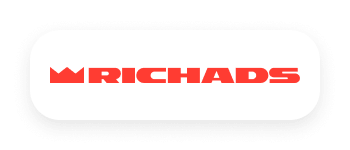
RichAds stands among global self-serve mobile ad networks for advertisers and publishers that can give you exclusive access to thousands of high-quality publishers worldwide.
They are trusted by thousands of affiliates worldwide as a proven source of high-quality traffic. They are perfect for finding high-converting audience segments in a variety of mobile ad formats.
Features:
- Over 5 billion daily impressions
- Advanced targeting and optimization tools
- Support for push notifications, native, and display ads
- Performance-based optimization algorithms
- Dedicated account management
Benefits:
- High-converting traffic sources
- Competitive pricing with performance guarantees
- Excellent for affiliate marketing campaigns
- Strong presence in emerging markets
- Responsive customer support
Best For: Performance marketers and publishers focused on affiliate marketing and conversion optimization.
Payment Terms: Various payment options with flexible minimum payouts based on traffic volume.
AppSamurai
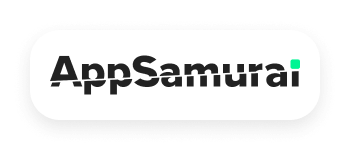
AppSamurai is an AI-powered One-Stop-Shop user acquisition platform for advertisers to access premium global placements.
Features:
- AI-based real-time campaign optimization
- Direct OEM placements on Android devices
- Rewarded engagement and offerwall formats
- Comprehensive analytics and reporting
- Cross-platform campaign management
Benefits:
- Access to exclusive OEM inventory
- AI-driven performance optimization
- High-quality user acquisition
- Personalized account management
- Competitive pricing for premium inventory
Best For: App developers seeking user acquisition and publishers with premium mobile inventory.
Payment Terms: Flexible payment terms with personalized minimums based on traffic quality.
EXADS
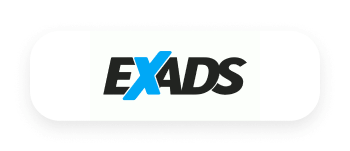
EXADS builds powerful white-label ad-serving platforms customized to the smallest detail for advertisers, publishers, ad networks, and agencies.
It provides all the functionalities necessary to maximize revenues while the teams provide all the support required.
From a fully-fledged ad network infrastructure to publisher ad servers and native, video, mobile, or email ad servers, EXADS covers all the aspects of ad serving, cross-channel and cross-device.
Features:
- White-label ad serving platform
- RTB integration capabilities
- Advanced targeting and optimization
- Support for display, native, video, and rich media ads
- Comprehensive analytics and reporting
Benefits:
- Fully customizable ad serving solution
- 24/7 technical support
- High-performance ad delivery
- Flexible integration options
- Strong focus on customer success
Best For: Ad networks, agencies, and large publishers requiring customized ad serving solutions.
Payment Terms: Custom payment terms based on platform requirements and usage volume.
Unity Ads

Unity Ads is a mobile ad network focusing on mobile game monetization.
Unity Ads has its ad exchange with dozens of integrated demand sources. It allows publishers to implement all kinds of mobile ads network and supports all major mobile platforms and operating systems. Detailed reporting and insights are also available.
Features:
- Rewarded video ads optimized for gaming
- Playable ad formats for interactive experiences
- Cross-promotion tools for game developers
- Integration with Unity development platform
- Gaming-specific analytics and KPIs
Benefits:
- High engagement rates for gaming audiences
- Specialized gaming advertiser demand
- Seamless integration with Unity development tools
- Optimized for in-game monetization
- Strong performance in gaming verticals
Best For: Mobile game developers and publishers focused on gaming audiences.
Payment Terms: NET 60 payment cycle with $100 minimum payout via wire transfer or PayPal.
HilltopAds
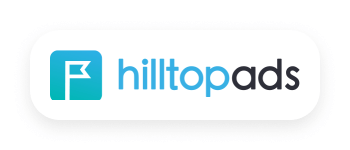
HilltopAds is one of the best CPM mobile ad exchanges for publishers and advertisers from all over the world.
The unique feature of HilltopAds is traffic segmentation by quality and activity of users.
First, HilltopAds algorithms remove all bot/cheated traffic.
Further, the remaining traffic sources are segmented into 3 groups:
- The high-quality segment contains the sources of the highest quality traffic that will convert your ad in the best possible way. If traffic quality decreases, such a source is automatically excluded from your campaign. You don't have to do anything;
- The medium quality segment contains users with average quality and activity scores. This segment is ideal for scaling your campaign after testing high-activity traffic;
- The low activity segment contains users who are least likely to perform the target action but are not bot traffic. Suitable for those who want the maximum number of impressions at the lowest prices.
Features:
- Proprietary traffic quality segmentation
- Advanced fraud detection and prevention
- Multiple ad formats including pop-ups and push notifications
- Real-time optimization algorithms
- Comprehensive targeting options
Benefits:
- High-quality traffic with fraud protection
- Segmented traffic for optimal performance
- Competitive pricing for premium inventory
- Fast account activation and setup
- Flexible payment options
Best For: Publishers and advertisers prioritizing traffic quality and fraud prevention.
Payment Terms: Fast payments with low minimum thresholds and multiple payment methods.
PropellerAds

PropellerAds is a multisource advertising platform providing access to unique traffic sources and AI-based ad-serving/optimization tools for media buyers, agencies, brand owners, and affiliate marketers.
PropellerAds' in-house developments, such as advertisement rotation algorithms, allow you to analyze a large number of users by numerous parameters and find the most suitable audience for each offer.
Features:
- CPA Goal bidding with AI optimization
- Interest targeting for push notifications
- Multiple ad formats including push, pop-under, and interstitial
- Advanced targeting and optimization tools
- Comprehensive analytics and reporting
Benefits:
- AI-powered campaign optimization
- Access to unique traffic sources
- Competitive pricing with performance guarantees
- Strong presence in global markets
- Excellent for performance marketing
Best For: Performance marketers and publishers seeking AI-optimized campaigns with diverse traffic sources.
Payment Terms: Flexible payment terms with various minimum thresholds based on traffic volume.
Amazon Publisher Services
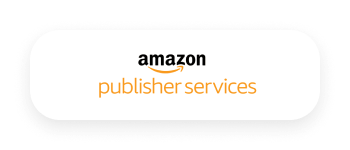
Amazon Publisher Services (APS) belongs to the largest mobile ad networks. It allows publishers and app developers to monetize mobile app traffic through an array of mobile ad formats.
The platform comes with unique Amazon ad demand and available integrations with other demand sources. APS uses in-app header bidding technology and comes with an array of analytics tools.
While APS offers great features and tools, joining the platform can be challenging.
Features:
- Header bidding technology for optimal yield
- Access to Amazon's advertiser demand
- Integration with other demand sources
- Advanced analytics and reporting
- Transparent auction dynamics
Benefits:
- Access to premium Amazon demand
- Competitive eCPMs and fill rates
- Transparent pricing and reporting
- Strong brand safety measures
- Integration with Amazon's advertising ecosystem
Best For: Premium publishers with high-quality inventory seeking access to Amazon's advertising demand.
Payment Terms: Custom payment terms based on publisher requirements and traffic volume.
To sum up
The best mobile ad networks 2025 offer publishers diverse monetization opportunities with advanced targeting, optimization, and fraud prevention capabilities. Success depends on choosing platforms that align with your audience, traffic volume, and revenue goals.
Key recommendations:
- Start with established networks like SmartyAds or Facebook Audience Network for reliable baseline revenue
- Diversify your portfolio by testing multiple networks to maximize fill rates and eCPMs
- Focus on user experience by selecting networks with high-quality ads and robust brand safety measures
- Monitor performance closely using analytics to optimize ad placements and formats
- Consider specialized networks for specific verticals like gaming or performance marketing
The mobile advertising continues evolving rapidly, with AI-powered optimization, advanced targeting, and new ad formats driving innovation. You need to stay informed about those changes in order to choose the best mobile ads platform for hitting your goals.
Stay ahead of advertising innovations. Join SmartyAds SSP as a publisher!

FAQ
Video ads and native ads lead performance metrics in 2025, with rewarded video achieving 85%+ completion rates. Interstitial ads work well for natural app transitions, while banner ads provide consistent baseline revenue. The best mobile ad networks offer multiple formats for optimal monetization.
Top mobile ad networks for publishers implement multi-layered brand safety measures, including advertiser verification, content screening, and real-time monitoring. Networks like SmartyAds use AI-powered fraud detection, while established platforms maintain strict advertiser quality standards and offer granular blocking controls.
Yes! Most mobile advertising platforms for app monetization welcome publishers of all sizes. SmartyAds and other leading networks have no minimum traffic requirements, making them accessible to small publishers. However, higher traffic volumes typically unlock better rates and premium demand sources.
